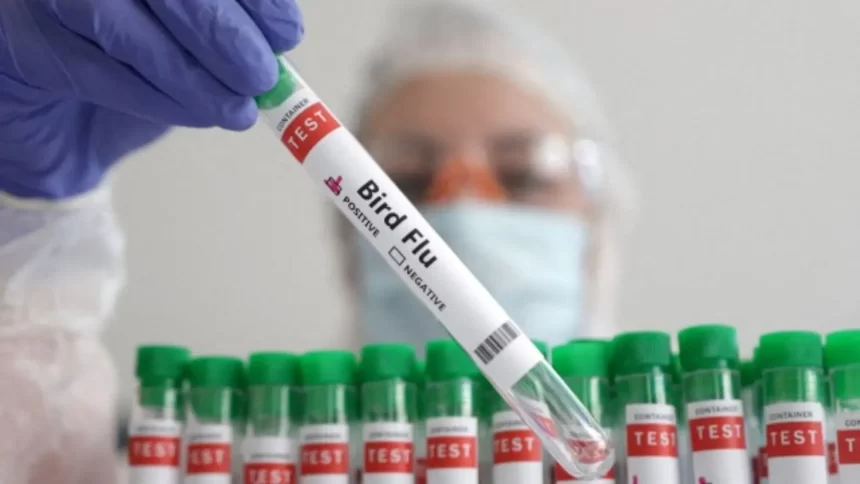CDC Introduces $5 Million Program to Shield Livestock Workers from Flu Hazards
In a step to safeguard health the US Centers, for Disease Control and Prevention (CDC) has unveiled a substantial $5 million program focused on safeguarding livestock workers. This new initiative is aimed at reducing the dangers associated with flu and the potential emergence of harmful virus strains. With the influenza virus spreading among domesticated and wild animals this program seeks to protect frontline workers who face risks of exposure.
Dr. Nirav Shah, the deputy director of the CDC emphasized the importance of protecting workers in the livestock industry from both flu and potential new strains of influenza. Livestock workers face risks not, from common flu viruses but from H5N1, a dangerous bird flu strain that is prevalent, among animals.
Shah highlighted the importance of protecting these workers from flu especially since they may also come into contact, with H5N1 viruses. By preventing influenza in this group the likelihood of strains of influenza A emerging is lowered. This precaution is vital because if a person is infected with two different flu strains at the time theres a chance they could merge and form a virus with unknown characteristics possibly being more contagious or resistant, to treatments.
The Threat of Genetic Reassortment
The CDC is focusing on the risks associated with reassortment, which occurs when different virus strains infect a cell simultaneously and give rise to a virus. While this concept is largely theoretical its implications are profound. A notable example is the H1N1 of 2009 where genetic reassortment, between existing and new influenza strains in pigs was identified as a contributing factor. Although the exact process of reassortment can be ambiguous at times the potential for generating virulent viruses remains a cause, for concern.
Dr. Shah emphasized that being able to predict something also means being able to prevent it. The CDCs proactive approach aims to lower the chances of a strain of influenza emerging, combining features of the flu with more severe strains such, as H5N1.
A Cooperative and Trustworthy Strategy
The CDCs program won’t require farm workers to get flu shots. Will encourage them to participate. Health authorities plan to provide vaccines, at community events and popular meeting places for farm workers. The key to the programs effectiveness lies in building trust through education. Shah emphasized, “This initiative hinges, on trust, which in turn depends on us explaining why getting the vaccine is crucial.”
If you want to help out with this project or learn more, about flu shots you can check out these sources for seasonal flu vaccines and other health products;
Locate a Flu Shot; Discover where you can get vaccinated nearby.
Health Insurance Marketplace; Look into your insurance coverage for flu shots.
Get Seasonal Flu Vaccines at CVS; vaccine services, at your neighborhood CVS
Additional Support, for Health of Farm Workers
Apart from the $5 million designated for flu vaccinations the CDC is also assigning $4 million to the National Center for Farmworker Health (NCFH). This financial assistance aims to enhance initiatives, in educating and safeguarding farm workers against avian influenza. The NCFH will work together with community groups to deliver training, broaden testing opportunities and supply protective gear.
The latest update, on Avian Influenza
released information indicates that there have been nine instances of H5N1 infection in individuals handling poultry in Colorado. The cases have mostly displayed symptoms like conjunctivitis. Although the likelihood of transmission to the population is minimal the bird flu epidemic has had an impact on countless animals spanning poultry, wild birds and domestic pets. If you wish to delve into the topic of influenza here are some recommended sources, for further reading;
Keep yourself informed about the updates, on bird flu and ways to prevent it by checking out the CDCs information. Find out more about how the National Center for Farmworker Health’s working to assist and safeguard farmworkers.
Conclusion
In conclusion the CDCs initiative, funded with $5 million plays a role in reducing the risks linked to bird flu among those who work with livestock. Through providing seasonal flu vaccines and improving health education this program aims to stop new and potentially harmful influenza strains from emerging. It is essential for support and awareness to be maintained as this initiative moves forward in order to protect health and ensure the well being of individuals involved in animal care.
Stay informed stay protected and show your support, for these health initiatives that contribute to creating an environment for everyone.


